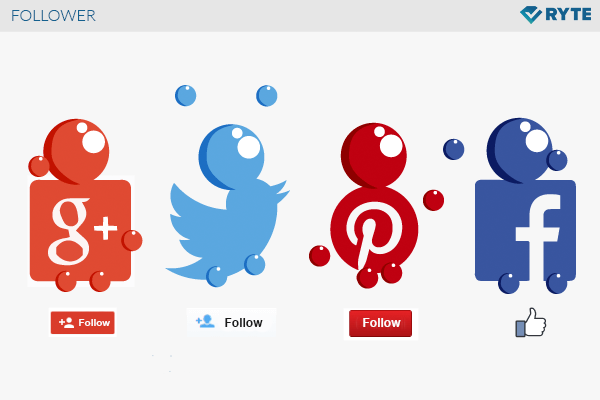Follower
Followers, refers to users who have subscribed to the profile of other users, particularly in the micro-blogging service Twitter. Followers receive tweets of other users which are directly displayed in their timeline and can retweet, favorite, reply to the tweet or embed it. Other social networks use the term “follower” as well in order to identify subscribers, fans, or recipients such as Instagram or Lovoo.
The number of followers is a measure of popularity or reputation management. From the perspective of marketing, the number of followers is equated with reach or coverage. However, this is only useful if every follower is a real person. Recently, it has often happened that social networks and microblogging services have deleted fake profiles or profiles which have been inactive for a long time. As a result, many known profiles of stars and celebrities lost coverage.[1]
Followers on Twitter
All users who follow a particular user, in other words subscribed to their posts are called followers on Twitter. Each Twitter user can look up on a list, which users are following that person. Following a person has several options. On the one hand, users can send each other private direct messages that do not appear in their timeline. On the other hand, any tweet made will appear on the timeline of that person’s followers.
Each user can control who follows their tweets. To this end, a user can set up their account so that he/she will have to confirm any new follower first before they can see the posted tweets. This also means that the published tweets don’t get indexed by the Google search engine. If the user does not wish to generally prevent following, but does not want to allow a certain follower, he/she can block that user.
If a Twitter account is used to establish large contact networks, certain limitations must be taken into account:[2]
- 250 Direct messages a day
- 1,000 tweets / retweets a day
- 1,000 followings a day
- No more than 2,000 total followings on a regular basis
Trying to build more followers through illicit methods, for example by third-party software may sometimes lead to the blocking of the Twitter account. Even the aggressive collection and sale of followers can have negative effects. .[3]
Followers in other services
Other services now speak of followers as well. Facebook users have the option to subscribe to other users and profiles. This means that they see the posts of the person being followed in their timeline, but have no friendship status. Other technologies that make it possible to collect followers, are Google+, Blogconnect or RSS.
Logically, one can speak of followers in many social networks, feeds and microblogging services. Although the term was first used with reference to Twitter, the principle is basically the same on other platforms. By clicking on Follow, Like, +1 or subscribe, a user connects to the profile of another user and will be updated with current content in the stream of the relevant service. The only variation from platform to platform would be the different options of interaction or responses to the updated content - whether tweets, status updates or new content of a website.
Importance for search engine optimization
The SEO industry believed for a long time that activities in social media channels, such as Likes in Facebooks or +1 in Google+, play a role in the Google search engine rankings. In this video Video Matt Cutts makes it clear that this is not so. The decisive factor is much more so that the operators of websites act “social” and provide added value for the readers. While this includes any activities in the social media channels, it is not a direct ranking criterion. Accordingly, the number of followers on Twitter & Co. play a subordinate role.
The links from Twitter are considered worthless, as they get passed to Google as no-follow links. In fact, there have been contracts between Twitter and Google in the past to have some tweets transmitted via a separate channel with DoFollow links to the Google index and Bing through Twitter.[4] This contract has since expired. But in the meantime data is being transmitted and even if the links are not being tracked, Twitter links nevertheless have some value –nofollow links are also required for a natural link structure.
Meanwhile the importance of such social signals has apparently increased. It is at least under hot debate. Reason for this assumption was the observation that many large websites that are in top positions in the SERP also have a lot of social signals, in other words, much user interaction in social networks or microblogging services. However, no causal relationship was able to be demonstrated, as this can also be due to the popularity and thus reach of the website. But the fact is that the user interaction is an important signal. It is a sign of increased user involvement. And of course, a lot of followers also means wide coverage and remains relevant for distributing content and advertising messages, even if it is not a significant ranking factor.[5]
References
- ↑ Instagram deletion campaign: Justin Bieber loses millions of followers spiegel.de. Accessed on 05/08/2015
- ↑ Twitter Limits (API, updates and following) support.twitter.com. Accessed on 05/08/2015
- ↑ Folge-Limits und Best Practices support.twitter.com. Accessed on 05/08/2015
- ↑ / Why nofollow links are better than your image www.seo-trainee.de. Accessed on 05/08/2015
- ↑ The Top 4 Ways to Use Social Media to Earn Links - Whiteboard Friday moz.com. Accessed on 05/08/2015

